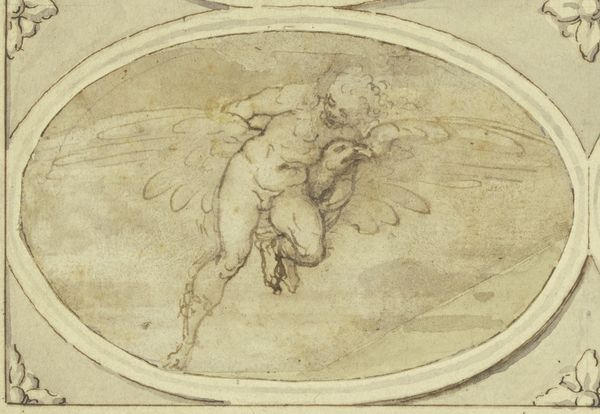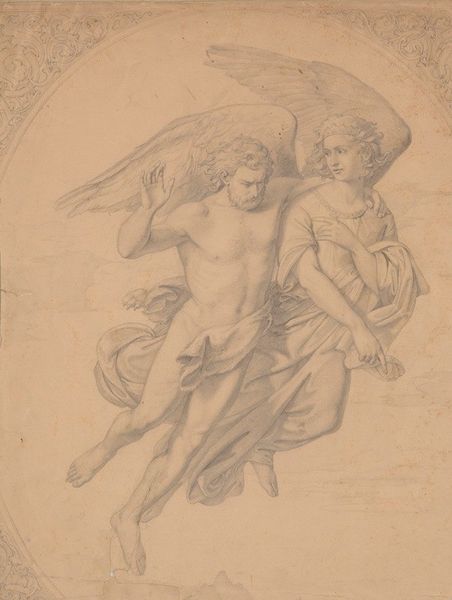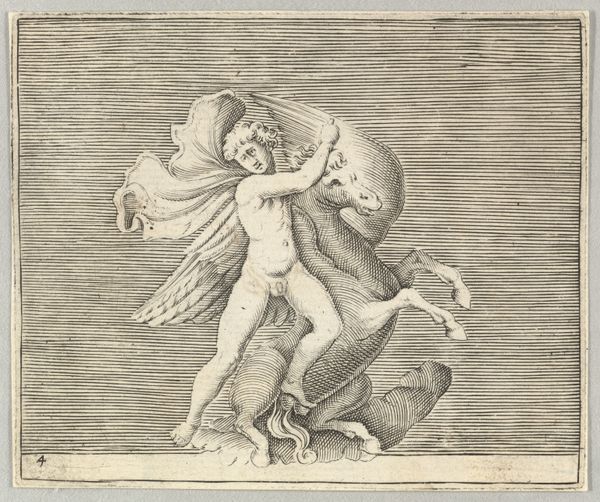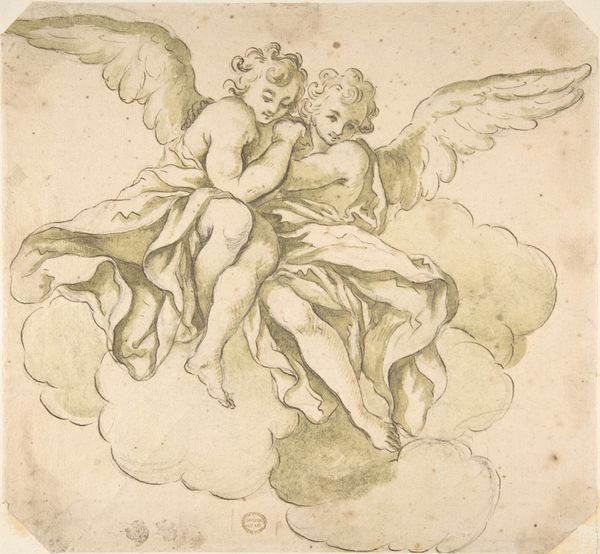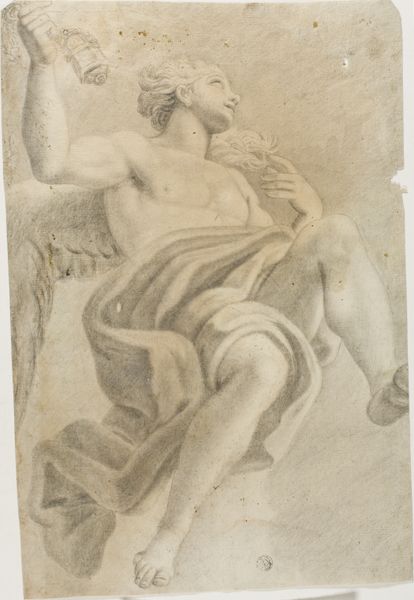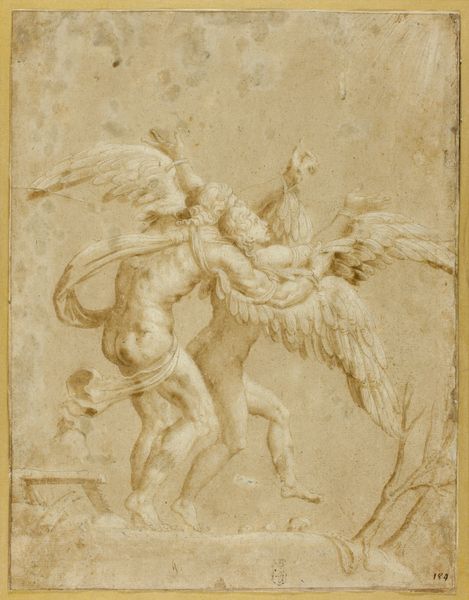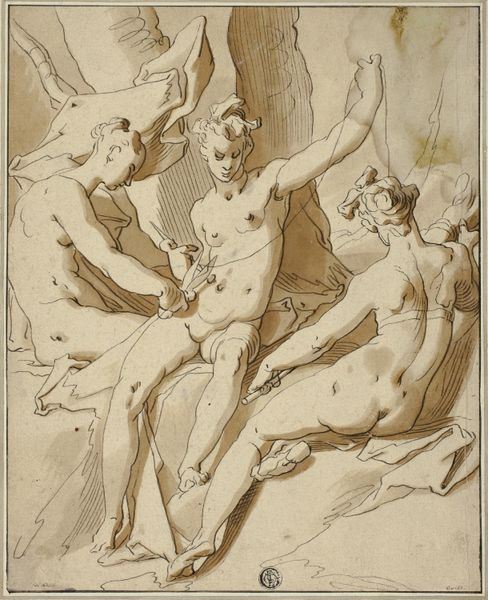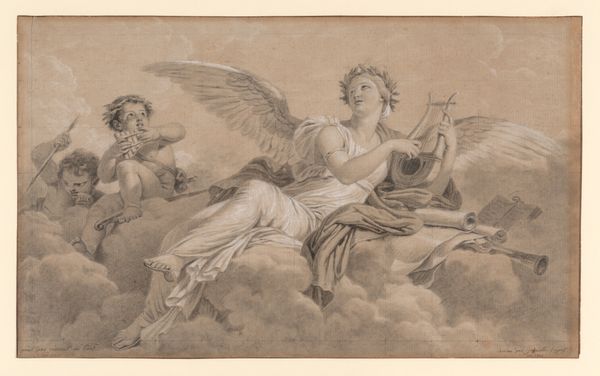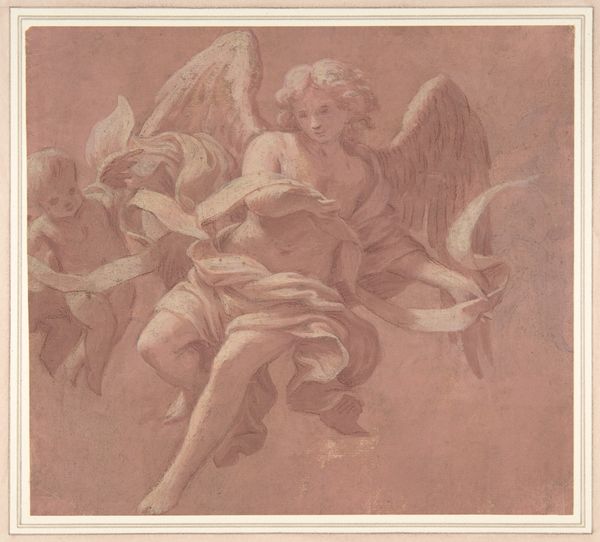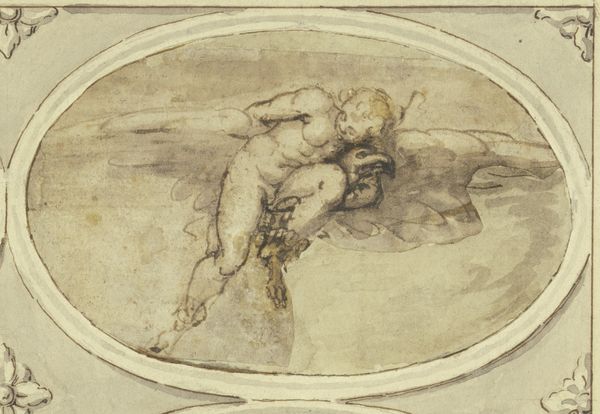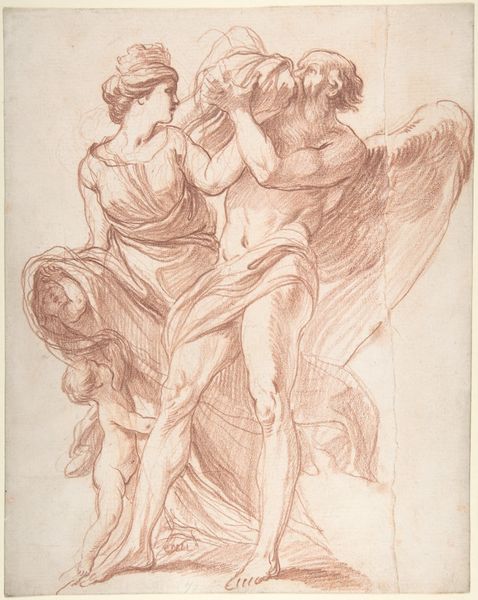
Morgenen eller dagen. En vinget flyvende ung mand 1743 - 1809
0:00
0:00
drawing, ink, pencil, charcoal
#
drawing
#
neoclacissism
#
allegory
#
landscape
#
charcoal drawing
#
figuration
#
ink
#
pencil
#
charcoal
#
academic-art
Dimensions: 174 mm (height) x 308 mm (width) (bladmaal)
Editor: This drawing, "Morgenen eller dagen. En vinget flyvende ung mand," by Nicolai Abildgaard, made with pencil, ink, and charcoal sometime between 1743 and 1809, feels almost like a classical frieze. The delicate shading gives the figure weight despite being airborne. How would you interpret the work? Curator: Well, looking at Abildgaard's process – the layering of charcoal, ink, and pencil – highlights a key element of Neoclassical art production. The artist carefully builds form and volume, mimicking the classical sculptures they revered. But think about the labor involved, the deliberate act of creating an idealised form for an elite audience. This contrasts starkly with the often romanticized notion of effortless artistic genius, don't you think? Editor: Definitely! I see that labor reflected in the academic style, like it’s part of the artistic method to build these artworks. Does this process reveal something about the materials used, too? Curator: Precisely! Charcoal, pencil, and ink – relatively inexpensive materials. Yet, Abildgaard elevates them to create a work referencing the luxury of marble sculpture. This clever manipulation speaks to the artist’s ingenuity, and simultaneously hints at the economic realities underpinning artistic production in the late 18th century. Was Abildgaard constrained by material scarcity or intentionally alluding to his own virtuosity? Editor: That's interesting! So, you are seeing both the celebration of craft and, perhaps, a commentary on the economics of art in the same piece. Curator: Exactly! It reveals how the creation of "high art" relies on often-overlooked material conditions and skilled labor. Abildgaard’s drawing prompts us to question the hierarchy of art versus craft, inviting reflection on how artistic value is constructed. Editor: I hadn’t thought about it that way, viewing this more from an economic lens helps me appreciate the craftmanship, the social context of this beautiful drawing. Curator: And understanding production enables us to challenge long-held assumptions about artistic creation and valuation.
Comments
No comments
Be the first to comment and join the conversation on the ultimate creative platform.

